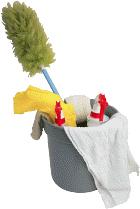Much like anything in your home, TV screens get dirty with fingerprints and dust and require a periodic cleaning. Keeping your TV screen clean is essential for ensuring a clear picture, and getting the longest life from your display.
Cleaning the front of your TV is not something that should be left for the cleaning lady. The use of certain cleaning products and solvents can damage the front of your TV screen. Special care must be taken in order to make sure that your TV screen is cleaned properly.
Every kind of TV has different steps for proper cleaning. If you are unsure what kind of TV you own, consult your TV user's manual to ensure that you are using the right cleaning method.
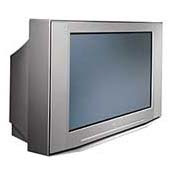 How To Clean a Direct-View CRT TV
How To Clean a Direct-View CRT TV
Older direct view TV's are typically best cleaned with simple glass cleaner and a paper towel. I'd recommend avoiding harsher-commercial glass cleaners with ammonia and instead opt for a regular-strength streak-free formula.
To apply, make sure that the TV is turned off. Spray glass cleaner on the paper towel (don't soak it completely); NEVER spray glass cleaner directly on the front of the tube as some may drip down small cracks between the class and plastic housing. Wipe the glass with the paper towel continuously until fingerprints and streaks are removed.
Some direct-view CRT TVs, particularly higher end models sold from the late '90s to the mid 2000s, may contain any special coatings like an anti-glare coating that could be stripped by some forms of glass cleaner. These screens are usually spotted by examing the reflection from a light source in the room; if the reflection's color appears tinted green or purple, then some form of anit-reflective coating has been applied. While mild glass cleaners not containing ammonia should be safe for most forms of anti-reflective coatings, an alternative would be to use a soft, lint-free towel dampened with distilled water or a specifically formulated screen cleaning product, see below for recommendations.
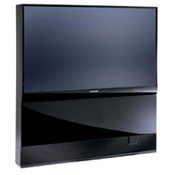 How to Clean a CRT, DLP, or LCD Rear-Projection TV
How to Clean a CRT, DLP, or LCD Rear-Projection TV
Before you can begin cleaning, you need to determine if your rear-projection TV does or does not have a screen shield installed. A screen shield is a hard plastic cover over the front of the actual screen itself. Nearly all LCD and DLP rear-projection displays will have a shield, however many CRT rear-projection TVs will not. A screen shield will usally be easy to identify, looking like a reflective piece of plastic on top of the screen. If the surface is unreflective and "flat" looking, then no shield is present. If you can't tell, give the front of the TV a light tap, and if your finger doesn't touch the screen you have a shield. Another way to tell is to check for ridges in the screen area; if you can feel ridges on the screen, then you do not have a screen shield.
To clean a TV with a screen shield, a dry, lint-free cloth will often take care of any fingerprints and dust on the shield surface. If additional cleaning power is required, slightly dampen the cloth with water and clean the entire screen surface.NEVER use a paper product, like a paper towel, which can leave tiny scratches all over the surface. Als, do not use a chemical cleaner on the screen shiled itself. Screen shields can have a tendency to streak while cleaning if using a . If this happens, try to use distilled water instead of tap water, or use a dry cloth to buff the screen in a small circular motions.
Rear projection TVs without a screen shield require very delicate cleaning practices. I highly recommend using a specialized projection TV cleaning product to clean a rear projection screen. In the past, I've always used Mitsubishi's Screen Cleaner part number CLEANER-VSS from their service department if it's still available. If not, contact a few shops in your area and ask what cleaner they use and if you can purchase from them.
You can use a distilled warm water to clean the screen as a worst cast, but make sure you clean the entire surface evenly without putting too much pressure on the screen. Follow up with a dry cloth right away to dry.
I do not recommend cleaning CRT lenses or internal mirrors yourself. Contact a qualified technician to clean these parts, if necessary.
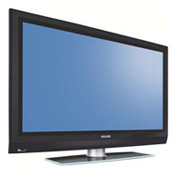 How to Clean Plasma TVs
How to Clean Plasma TVs
Plasma TV screens are safe to clean with a lint-free or microfiber cloth. A slightly damp cloth with a very tiny amount of liquid dish soap (not detergent) can clean just about any amount of grime from the front of the TV. When finished, dry the front of the screen to remove any streaks if necessary.
NEVER use heavy cleaning agents with abrasives, which can strip special coatings and heavily scratch the screen's surface. Also, do not use paper products, like paper towels, which can also scratch the front of the TV.
Even though standard household items can be used, I highly recommend picking up a specialized screen cleaning product for flat screen displays, like the ones listed below. They're not expensive, and one bottle generally lasts a very long time.
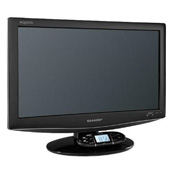 How to Clean LCD Flat Panel Displays and Televisions
How to Clean LCD Flat Panel Displays and Televisions
How you clean LCD displays, like rear-projection TVs above, will depend on whether or not the LCD display contains a matte or glossy finish.
To clean LCD screens with glossy fronts, it's generally okay to follow the same directions as cleaning Plasma TVs. See above.
LCD displays with a matte finish can easily be stained or damaged with improper cleaning methods. For starters, I recommend using only a specialized flat screen cleaning product and a microfiber cloth like listed below. Dry cloths never seem to get the fingerprints off adequately, and it's just too easy to stain or streak the screen with other methods. When cleaning, do not press hard on the screen during cleaning. Doing so could cause damage to the display itself. Do not use any cleaning solvents, such as glass cleaner or soaps, to clean the LCD screen. Also avoid paper products, which could scratch the front of the screen.
If you have a pet or child who rubbed something on the screen that you feel could stain or damage it if cleaning was attempted, contact your local TV or computer service center (for laptops and monitors) for assistance.
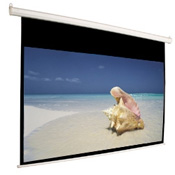 How to Clean Projection Screens
How to Clean Projection Screens
While I could give some general guidelines that outline some basic, and usually safe, cleaning steps, there are so many different screen manufacturers and screen types (like PVC, acrylic, glass coated, etc) that I recommend you get specific instructions from your screen's manufactuerer.
If you know your screen's manufacturer (like Da-Lite or Stewart Filmscreen), you should be able to find cleaning instructions specific to the type of screen you have on their website. If you do not know your manufacturer, Screen Innovations has a decent guide with instructions for various types of screens. You can see it here. How to Clean TV Cabinets and Cassis
When dusting a TV or display's exterior, dust with a damp cloth or a diluted liquid dish soap solution (a drop or two should be sufficient). Paper products can scratch the surface of high-gloss cabinets, so avoid paper products in general, instead opting for a microfiber or lint-free cloth. Heavy cleaners can strip the finish off of TV cabinets over time.
When cleaning cloth speaker grilles, dust with a dry cloth, compressed air, or vacuum cleaner ONLY. Wet cleaners could stain or damage the grille cloth.
Recommended Tools for Your Cleaning Arsenal
Below are some cleaning products I recommend for cleaning various displays. Reference the cleaning instructions above to see which product is used for specific displays.
Cloths and Dusters
- Flour Sack Towel - available at Bed, Bath, and Beyond. Great for gently cleaning and drying various display types, exterior cabintets, and does a great job drying dishes, too!
- Microfiber Cloth - available everywhere. There are lots of microfiber cloth products available. I personally use a generic version they sell at a local hardware store, and I tend to prefer the microfiber suede over the shinier microfiber glass wipes, but either will do.
- Paper Towels - Good 'ol paper towels. Safe on old glass tubes and some exterior components. Just be careful not to scratch delicate surfaces!
- Compressed Air - Very handy for dusting tight areas, remote controls, speaker grilles, and in cracks. I always recommend having a bottle around.
Wet Cleaning products
- Distilled or De-ionized Water - available at your supermarket or drug store. Good for cleaning with less streaks and no residue left behind. It's cheap.
- Ultra Dawn Original - When a mild soap is necessary, for exterior cabinets or screens safe to clean with mild soap, I typically recommend Ultra Dawn original. About a drop for every 2 cups of water should be sufficient for most cleaning tasks. Never apply dish soap directly to a screen or cloth without diluting it.
Specialized Cleaning Kits
- Klear Screen - They've got a wide variety of kits for specialized applications, although the basic Klear Screen kit is what I use on just about everything... and it comes with microfiber cloths.
- Monster ScreenClean - It's one of the few Monster products I'd actually recommend. I've used this one many times, and it really does a fantastic job. The Dual Pack is a pretty good deal, and will also work on just about everything.
- Mitsubishi CLEANER-VSS - If you can still get it through Mitsubishi, I highly recommend this for lenticular rear projection screens.






